Results 7,401 to 7,410 of 12096
Thread: Anandtech News
-
10-05-17, 09:23 AM #7401
Anandtech: The AnandTech Coffee Lake Review: Initial Numbers on the Core i7-8700K and
It has been ten years since Intel introduced quad-core processors into its mainstream product range. It was expected that six-core parts would hit the segment a few years after, however due to process improvements, microarchitecture gains, cost, and a lack of competition, the top-end mainstream processor is still a quad-core a decade later. That changes today, with the new Intel 8th Generation Coffee Lake CPUs now available, with the Core i5 and Core i7 parts having six distinct physical cores. In this review, we cover the top SKU, the Core i7-8700K, with numbers from the Core i5-8400.
More...
-
10-05-17, 09:23 AM #7402
Anandtech: ThinkPad Anniversary Edition 25: Limited Edition ThinkPad Goes Retro
As part of its celebration of the 25th anniversary of the ThinkPad lineup, Lenovo is launching a limited-edition ThinkPad Anniversary Edition 25. It feels like Lenovo might have an issue with this though, because ThinkPad loyalists are all going to want one of these exclusive devices. It features a retro look, along with some of the retro capabilities that ThinkPad has always been known for, but all built on a modern version of the device.
The original ThinkPad 700C was announced on October 5, 1992. It’s kind of hard to believe it’s already been that long. The ThinkPad name is still going strong, 25 years later, and it was only back at CES in 2015 that Lenovo had on display the 100 millionth ThinkPad ever produced.
The Retro ThinkPad offers a backlit 7-row ThinkPad classic keyboard, which the more traditional blue enter key, and of course a TrackPoint. There are dedicated volume keys, and status LEDs that tend to be missing on newer devices. The Thinkpad logo is also the more traditional multicolored version.
Under the covers, the Anniversary Edition 25 is based on the T470 laptop, and features a Core i7-7500U, paired with a GeForce 940MX GPU, in this 14-inch laptop. It features all of the modern IO and capabilities you’d expect in a laptop in 2017, despite the retro styling, and I would guess Lenovo isn’t going to have any issues selling the entire allotment.
For anyone wanting to purchase the device, they’ll have to act quickly. The ThinkPad Anniversary Edition will be available in limited quantities in select countries, starting at $1899 USD.
More...
-
10-06-17, 01:39 PM #7403
Anandtech: Price and Availability Watch: Core i7-8700K, Core i5-8600K and Core i3-835
Intel on Thursday officially initiated sales of its 8th Generation 'Coffee Lake' processors for desktops worldwide. The new chips offer more physical cores in the mainstream processor segment than their predecessors, but unlocked versions also come at $15-$20 higher MSRPs. As what usually happens with new products, the main questions are around whether the chips are actually available, and if the on-shelf prices are on par with manufacturer's suggested ones. In our searches so far, the new 8th Gen chips for desktops are not easy to get.
Actual Availability and Pricing
For our availability and price checks, we use multiple well-known stores across the world as well as price search engines to ensure that we are not missing anything. It is important to note that most stores tend to sell products at their MSRPs on launch days, but going forward prices tend to fluctuate.
Intel publishes prices as RCP (Recommended Customer Pricing). This is the price it gives for customers buying 1000 CPUs (a 'tray') as an OEM. Retail prices are often $5-15 higher depending on the configuration.
Intel Core i7-8700K
We start our small availability investigation from the Core i7-8700K (RCP: $359), which has all chances to become a bestseller: the CPU has six cores with HT, a relatively high-frequency out of the box, and an unlocked multiplier. It sounds like a dream processor for an enthusiast that also wants to save money compared to a high-end desktop system.
As it appears, the Core i7-8700K is hard to find. It is not listed on any Amazon local website, which is often not a good sign for overall stock levels. It is possible to pre-order the CPU model from multiple stores across the world, but it looks like their ETA is late-October to early-December, at least for certain stores in Europe. As for online auction sites, there are sellers demanding $800 - $900 per unit.Intel Core i7-8700K Availability and Pricing
As of October 6thRetailer Country Local Price Equivalent in USD (w/tax) Status Amazon U.S. - - Not Listed
Check AvailabilityB&H Photo Video U.S. $370 $370 ETA Unknown CDW U.S. - - Not Listed Fry's Electronics U.S. - - Not Listed Newegg U.S. $380 $380 Sold Out NCIX Canada $470 $373 ETA Unknown Amazon UK U.K. - - Not Listed Overclockers UK U.K. £360 $471 ETA Unknown OcUK Pre-Binned U.K. £500 - £800 $654 - $1046 Limited Stock Scan U.K. £360 $471 ETA Unknown Amazon DE Germany - - Not Listed Amazon ES Spain - - Not Listed Amazon FR France - - Not Listed Alternate Austria €400 $468 ETA in December Comstern Austria €396 $464 ETA 2-4 weeks Bora Computer Germany €410 $480 ETA Unknown CaseKing Germany €410 $479 ETA Unknown CK Pre-Binned Germany €440 - €870 $514 - $1017 ETA Unknown Komplett Sweden 4,199 kr $515 ETA in December Misco Sweden - - Not Listed Proshop Finland €430 ETA 10/26
Intel Core i7-8700
Moving on to the locked Core i7-8700 (RCP: $303). This chip is slightly slower than the unlocked part out of the box, but offers a lower 65W TDP.
The situation looks somewhat better for the non-K processor. The Core i7-8700 is not listed on any European Amazon site, but it can be purchased from B&H in the US, NCIX in Canada, and from Overclockers UK. The chips can be pre-ordered from multiple outlets (including Amazon US), but they are going to ship them sometime in late October or even in December, based on information from stores in Germany, Finland, and Sweden.Intel Core i7-8700 Availability and Pricing
As of October 6thRetailer Country Local Price Equivalent USD
(w/tax)In Stock Amazon U.S. $312 - ETA Unknown B&H Photo Video U.S. $312 $312 In Stock CDW U.S. $430 $430 Call Fry's Electronics U.S. - - Not Listed Newegg U.S. - - Not Listed NCIX Canada $420 $334 In Stock Amazon UK U.K. - - Not Listed Overclockers UK U.K. £330 $431 In Stock Scan U.K. £310 $405 ETA Unknown Amazon DE Germany - - Not Listed Amazon ES Spain - - Not Listed Amazon FR France - - Not Listed Alternate Austria €334 $391 ETA in December Comstern Austria €334 $391 ETA 2-4 weeks Bora Computer Germany €349 $408 ETA Unknown CaseKing Germany €334 $398 ETA Unknown Komplett Sweden 3,499 kr $429 ETA in December Misco Sweden - - Not Listed Proshop Finland €360 $422 ETA 24/10
Intel Core i5-8600K
Next up is Intel’s highest-performing CPU in the Core i5 range, the i5-8600K (RCP: $257). This CPU officially costs ~$100 below the Core i7-8700K as it works at a slightly lower frequency, but it also lacks Hyper-Threading and has a smaller L3 cache, meaning it will be slower in all types of tasks, multi-threaded or single threaded. Good news, it can be overclocked.
A number of stores, including B&H, Newegg, ProShop, and CaseKing, are taking orders on the Core i5-8600K and promise to ship them by mid-October. In fact, B&H even claims that it has the chips in stock, but its delivery time is 10 days. Meanwhile in most cases, the Core i5-8600K CPUs are either not listed or are available only for pre-order with an unknown shipment date.Intel Core i5-8600K Availability and Pricing
As of October 6thRetailer Country Local Price Equivalent USD
(w/tax)Status Amazon U.S. $258 - ETA Unknown B&H Photo Video U.S. $258 $258 In Stock CDW U.S. - - Not Listed Fry's Electronics U.S. - - Not Listed Newegg U.S. $260 $260 ETA 10-20 days NCIX Canada $350 $278 ETA Unknown Amazon UK U.K. - - Not Listed Overclockers UK U.K. £270 $353 ETA Unknown Scan U.K. £258 $337 ETA Unknown Amazon DE Germany - - Not Listed Amazon ES Spain - - Not Listed Amazon FR France - - Not Listed Alternate Austria €279 $327 ETA in December Comstern Austria €278 $325 ETA 2-4 weeks Proshop Austria €290 $340 ETA 10/16 Bora Computer Germany - - Not Listed CaseKing Germany Boxed: €280
Tray: €270$327
$316ETA Unknown
ETA 10/11CK PreBinned Germany €300 - €600 $351 - $703 Unknown Proshop Finland €300 $351 ETA 10/16 Komplett Sweden 2,899 kr $355 ETA in December Misco Sweden - - Not Listed
Intel Core i5-8400
The Core i5-8400 is positioned as a mainstream CPU for higher-end desktops that will be loved by both OEMs and consumers. This processor is the most affordable six-core CPU on the market today. It has an RCP of $182, which is significantly lower than $257 for the Core i5-8600K and $219 for the Ryzen 5 1600. This chip cannot be overclocked, but it still looks very good for its price. But can you actually buy it right now?
Apparently, you can buy this chip. Leading retailers in North America either have the Core i5-8400 in stock or are about to get the first batch. You can also buy the chips from two retailers in the U.K. Meanwhile, mainland Europe is a mixed bag for the i5-8400 availability. You can grab the chip in Estonia from Arvutitark, but the company had 10 CPUs in total at press time — that is one unit per store in most of the cases. Meanwhile, CaseKing and ProShop Austria expect to start selling the i5-8400 in mid-to-late October. Some other outlets expect the inexpensive six-core Coffee Lake model to arrive in December.Intel Core i5-8400 Availability and Pricing
As of October 6thRetailer Country Local Price Equivalent USD
(w/tax)Status Amazon U.S. $187 $187 ETA 10/8 B&H Photo Video U.S. $187 $187 In Stock CDW U.S. - Not Listed Fry's Electronics U.S. - Not Listed Newegg U.S. $190 $190 In Stock NCIX Canada $250 $199 In Stock Amazon UK U.K. £172 $225 Ships from U.S. Overclockers UK U.K. £180 $235 In Stock Scan U.K. £172 $132 In Stock Amazon DE Germany - - Not Listed Amazon ES Spain - - Not Listed Amazon FR France - - Not Listed Alternate Austria €195 $228 ETA in December Comstern Austria €200 $234 In Stock ProShop Austria €200 $234 ETA 10/24 Bora Computer Germany €209 $244 ETA Unknown CaseKing Germany €200 $234 ETA 10/11 Arvutitark Estonia €189 $221 In Stock (ltd) Proshop Finland - - Not Listed Komplett Sweden 1,999 kr $245 ETA in December Misco Sweden - - Not Listed
Intel Core i3-8350K
Moving down to the Core i3 range. For users considering Intel’s Core i5-7600K, the new Core i3-8350K is now an optimum target and significantly cheaper. The Core i3-8350K has four cores, runs at 4 GHz, has 8 MB LLC and an unlocked multiplier. Intel wants $168 for the i3-8350K and this pretty much looks like a bargain when compared to the i5-7600K ($242). Now, let’s check the actual availability and pricing of the new SKU.
The Core i3-8350K is available from multiple retailers worldwide, but with a small overprice compared to its RCP as expected. That small overprice is common for other Coffee Lake models, but with the i3-8350K, it puts the SKU on the territory of the i5-8400. The latter is, of course, a non-overclocking CPU that runs at a moderate frequency, but it has six cores. Obviously, a lot of people will wonder which of the products is better for their workloads, but even users may be confused with the i3 and i5 overlap.Intel Core i3-8350K Availability and Pricing
As of October 6thRetailer Country Local Price Equivalent USD (w/ tax) Status Amazon U.S. $179 $179 In Stock B&H Photo Video U.S. $179 $179 In Stock CDW U.S. - - Not Listed Fry's Electronics U.S. - - Not Listed Newegg U.S. $180 $180 In Stock NCIX Canada $240 $191 In Stock Amazon UK U.K. £164 $215 Ships from U.S. Overclockers UK U.K. £170 $222 In Stock Scan U.K. £167 $218 In Stock Amazon DE Germany - - Not Listed Amazon ES Spain - - Not Listed Amazon FR France - - Not Listed Alternate Austria €193 $226 ETA in December Comstern Austria €198 $232 In Stock ProShop Austria €200 $234 In Stock Bora Computer Germany €199 $233 ETA Unknown CaseKing Germany €200 $234 In Stock Proshop Finland €210 $246 In Stock Komplett Sweden 1,999 kr $245 ETA in December Misco Sweden - - Not Listed
Intel Core i3-8100
The most affordable Coffee Lake model announced so far is the quad-core Core i3-8100, it costs $117 and can match something like the Core i5-7500 ($192) in terms of performance. Let’s check its real price and availability.
For some reason, Amazon does not offer the Core i3-8100 at all anywhere, but you can get the product from various other retailers across the world. At least in the US, the price of the i3-8100 is not inflated because it is a new model or because the supply is tight. In other regions, you can either get it straight away or within a week, which means the stores may have a good supply of the chip.Intel Core i3-8100 Availability and Pricing
As of October 6thRetailer Country Local Price Equivalent USD (w/ tax) Status Amazon U.S. - - Not Listed
Check AvailabilityB&H Photo Video U.S. $117 $117 In Stock CDW U.S. - - Not Listed Fry's Electronics U.S. - - Not Listed Newegg U.S. $120 $120 In Stock NCIX Canada $160 $127 In Stock Amazon UK U.K. - - Not Listed Overclockers UK U.K. £110 $144 In Stock Scan U.K. £110 $144 In Stock Amazon DE Germany - - Not Listed Amazon ES Spain - - Not Listed Amazon FR France - - Not Listed Alternate Austria €128 $150 ETA in December Comstern Austria €130 $152 ETA 2-4 weeks ProShop Austria €130 $152 In Stock Bora Computer Germany €125 $146 ETA Unknown CaseKing Germany €130 $152 ETA 10/11 Proshop Finland €135 $158 In Stock Komplett Sweden 1,349 kr $165 ETA in December Misco Sweden - - Not Listed
More Cores, Larger Caches, Higher Price if Unlocked
For many years, Intel has had a rather strict division between its unlocked Core i7 and Core i5 CPUs as well as Core i3 chips for mainstream desktop platforms both in terms of specifications and in terms of pricing. The Core i7 has always had four cores with HT as well as an 8 MB L3 cache, the Core i5 has featured four cores without HT as well as a slightly cut-down 6 MB L3 cache, whereas the Core i3 has integrated two cores with HT and 3 or 4 MB LLC. The launch of the Coffee Lake (Core i-series 8000 sequence) family adds two physical cores to all of the aforementioned product families, expands their caches, speeds up memory and brings in a number of other improvements — you can read about all of them in our review. The general principle that divides different product families remains the same though: the Core i7 has six cores with HT and a 12 MB cache, the Core i5 scraps HT and a part of the cache, whereas the Core i3 becomes a quad-core CPU without HT and a smaller cache.
When it comes to pricing, the situation requires some attention as it is a bit different from the usual. The locked Core i7-8700, Core i5-8400 and Core i3-8100 cost exactly the same amount of money as their direct predecessors (the i7-7700, i5-7400 and i3-8100). So, people getting those products essentially get two extra cores for the same price. Meanwhile, CPUs with an unlocked multiplier — the Core i7-8700K and the Core i5-8600K — run faster than their locked brethren out-of-box and can be overclocked further, but their RCPs are a bit higher than those of their direct predecessors.General Specifications of Intel's 2017 Mainstream Desktop CPUs 8th Generation 7th Generation Cores Freq.
(Base)L3 TDP Cores Freq.
(Base)L3 TDP i7-8700K 6/12 3.7 GHz 12 MB 95W i7-7700K 4/8 4.2 GHz 8 MB 91W i7-8700 3.2 GHz 65W i7-7700 3.6 GHz 65W i5-8600K 6/6 3.6 GHz 9 MB 95W i5-7600K 4/4 3.8 GHz 6 MB 91W i5-8400 2.8 GHz 65W i5-7400 3.0 GHz 65W i3-8350K 4/4 4 GHz 8 MB 91W i3-7350K 2/4 4.2 GHz 4 MB 60W i3-8100 3.6 GHz 6 MB 65W i3-7100 3.9 GHz 51W
In fact, after Intel introduced its Core i7 and Core i5 CPUs with an unlocked multiplier in 2011, it has, for the most part, kept RCPs constant, except with a blip on the Broadwell CPUs (due to eDRAM) and now the upgraded core parts. Intel charged $313 - $317 for an unlocked Core i7 in 2011-2012, increased that price to $339-$350 in 2013-2017 and even sold an unlocked Core i7 with a powerful iGPU for $366 in 2015 (but since the Broadwell Unlocked was barely aimed at 'traditional' enthusiasts, we can ignore that). Likewise, Intel used to sell an unlocked Core i5 for $212-$216 in 2011-2012 and then increased their prices to ~$242 for 2013-early 2017 period (if the i5-5675C is not taken into account).
Today, Intel increases pricing of the Core i7-8700K and the Core i5-8600K CPUs by $20 and $15 compared to their direct predecessors from the Kaby Lake family, a relatively small increase that fits into the trend. This is hardly surprising. Overclocking is becoming more popular these days, makers of motherboards tend to put a hefty premium on their high-end products, so Intel wants to get its slice of the pie as well.
When it comes to the Core i3-8350K, it costs $168, which is in line with its direct predecessor, the Core i3-7350K. Keep in mind that Intel launched its first unlocked Core i3 earlier this year and these chips cost more than their brethren with locked multipliers did. Entry-level i3 overclocking is something new for Intel, but there is no MSRP change with the increase of the number of cores.
First Core Count Upgrade in a Decade and Per-Core Pricing Drops
Intel introduced its first quad-core processor for mainstream desktop platforms in 2006 with the launch of the Core 2 Quad Q6600. The company has been slowly increasing core count of its high-end desktop CPUs from four to six, then to eight, then to 10, and then all the way to 18 cores this year. Meanwhile, Intel’s mainstream desktop platforms have not seen any core count upgrade for a decade. Obviously, they have been gaining performance with microarchitecture enhancements, the addition of Hyper-Threading and other improvements (such as bigger and better iGPUs), but their physical core count stalled at two for entry-level and at four in case of higher-end parts from 2006 to 2017. With the launch of the Coffee Lake, Intel changes that.
While Intel does increase pricing of unlocked Core i5/i7 CPUs compared to predecessors a bit, it does not do so with the rest of the family, adding cores at no charge. Probably, this means that the costs of the new Coffee Lake-S chips are not significantly higher than the costs of the Kaby Lake-S CPUs operating at higher frequencies, which possibly means that Intel’s 14++ (14nm-plus-plus) process technology is mature and the yields are high. Another thing to point out is that Intel significantly lowers per-core pricing of its CPUs. For example, the i5-8400 and the i3-8100 are available at $30 per core, down from $47 per core for the i5-7400 just a couple of quarters ago.
The new Core i-series 8000-sequence CPUs require new Intel 300-series chipset based motherboards, so people interested in upgrading will still have to pay a premium for the new Coffee Lake platform. But at least there are now mainstream ($182 - $257) Intel CPUs with six cores as well as entry-level ($117) offerings with four cores. At these price points, the new processors for Intel are likely to get rather popular among consumers, especially those who upgrade from five or six-year-old platforms.
Without any doubts, Intel’s official recommended prices for the new Coffee Lake-S parts look rather good if we compare them against RCPs of the Kaby Lake-S SKUs. Meanwhile, the big question is how much do the new parts actually cost in real stores and how widely available they are. This is something we are going to investigate in our next section.Prices of Contemporary CPUs from Intel Cores/
ThreadsBase Freq. Intel
RCPPrice per Core Coffee Lake-S i7-8700K 6/12 3.7 GHz $359 $60 i7-8700 6/12 3.2 GHz $303 $51 i5-8600K 6/6 3.6 GHz $257 $43 i5-8400 6/6 2.8 GHz $182 $30 i3-8350K 4/4 4.0 GHz $168 $42 i3-8100 4/4 3.6 GHz $117 $29 Kaby Lake-S i7-7700K 4/8 4.2 GHz $339 $89 i7-7700 4/8 3.6 GHz $303 $84 i5-7600K 4/4 3.8 GHz $242 $60 i5-7400 4/4 3.0 GHz $182 $47 i3-7350K 2/4 4.2 GHz $168 $92 i3-7100 2/4 3.9 GHz $117 $60 High-End Desktop CPUs i9-7980XE 18/36 2.6 GHz $1979 $110 i9-7960X 16/32 2.8 GHz $1684 $105 i9-7940X 14/28 3.1 GHz $1387 $99 i9-7920X 12/24 2.9 GHz $1189 $105 i9-7900X 10/20 3.3 GHz $989 $108 i7-7820X 8/16 3.6 GHz $589 $86 i7-7800X 6/12 3.5 GHz $383 $72 i7-7740X 4/8 4.3 GHz $339 $86 i5-7640X 4/4 4.0 GHz $242 $64
Some Thoughts
The new Coffee Lake CPUs represent a significant upgrade of Intel’s mainstream desktop products in terms of core count. The launch of relatively affordable Core i5/i7 models with six cores will catalyze many people to upgrade their PCs with quad-core CPUs, so we expect the 8th Generation Core i5/i7 products to be rather popular. The quad-core Core i3-8350K seems to have a lot of potential among overclockers, but its price is so close to the six-core Core i5-8400 that it will inevitably create some confusion. In the meantime, the quad-core Core i3-8100 brings a significant performance boost to the i3 range, so we expect the SKU to be in high demand too.
Now, let’s talk about availability. The top-of-the-range Core i7-8700K model is not available from major retailers at all. Even on auction sites, there were only two sellers to offer this chip for $800 - $900 at press time. The Core i7-8700 is more readily available from large suppliers, but the majority of online stores cannot ship it right now. Availability of the Core i5-8600K is scarce, but some suppliers promise to have them in their stock sometimes in mid-October. As for the remaining three chips in the Coffee Lake lineup, the Core i5-8400, the Core i3-8350K, and the Core i3-8100, they can be obtained from multiple retailers, but not from all of them.
As noted above, pricing of new products in their first days of availability tends to be very close to MSRP. We have noticed that some of the CFL SKUs are priced above MSRP, but the difference was not very substantial. The big question is how high the prices are going to get if demand for Coffee Lake exceeds Intel’s supply.
Related Reading- The AnandTech Coffee Lake Review: Initial Numbers on the Core i7-8700K and Core i5-8400
- Intel Announces 8th Generation Core "Coffee Lake" Desktop Processors: Six-core i7, Four-core i3, and Z370 Motherboards
- Prices of Intel’s Coffee Lake-S CPUs Published: $400 for Core i7-8700K?
More...
-
10-07-17, 11:07 AM #7404
Anandtech: Logitech Boosts Precision of G203 Prodigy Mouse to 8000 DPI via Firmware U
Performance upgrades from hardware manufacturers are always welcome, but in the vast majority of cases even tiny upgrades come in a form of new products rather than in a form of software or firmware updates. Logitech has decided to do something that rarely happens these days: the company issued a firmware update that improves the precision and some other performance aspects of the entry-level G203 Prodigy gaming mouse, which was launched earlier this year. Among other things, the upgrade helps to position the G203 above the G102 launched in 2016.
One of the key features of the Logitech G203 Prodigy is its simplistic shape, which, as Logitech puts it, brings “ergonomics back to basics” without sacrificing usability. The mouse uses one of the company’s in-house-customized sensors with on-the-fly adjustable resolution (which was originally set at 200-6000 DPI) along with an ARM processing core that supports USB report rate of 1000 Hz (appropriate software is required for relevant operating systems). Buttons on the Logitech G203 Prodigy can be completely reprogrammed using Logitech’s software and then used on different PCs since button configuration is stored inside the mouse. As a courtesy to the recent market trends, Logitech engineers even installed a programmable RGB LED into the G logotype on the mouse.
With the new firmware update, Logitech has increased the maximum resolution of the G203 Prodigy’s sensor from 6000 DPI to 8000 DPI (or by 33%). In addition, the company increases the maximum speed and acceleration of the mouse from 200 IPS to 300 IPS and from 25G to 35G respectively. A legitimate question about the upgrade would be about the reasons why Logitech did not enable improved performance of the G203 at launch. The company says that it figured out how to tweak sensors and processors for maximum performance while developing one of its latest products, but does not elaborate. Perhaps, we are dealing with some sort of overclocking, or maybe Logitech is just unlocking some of the hardware capabilities, but since Logitech does not detail hardware inside its mice, we cannot be 100% sure about either of the options.
“We learned a lot of lessons in designing the new HERO sensor found in our latest Logitech G603 Lightspeed Wireless Gaming Mouse that could also be applied to the Logitech G203 Prodigy Gaming Mouse,” said Chris Pate, portfolio manager, Logitech G. “We’ve now taken that knowledge and upgraded the capabilities of the Logitech G203 to provide our customers with the latest and greatest technology from Logitech G.”
With this upgrade, Logitech not only improves its existing product, but actually differentiates it from its own Logitech G102 launched in 2016, which offers the same level of performance as the original G203.
To get the firmware upgrade, owners of the Logitech G203 Prodigy have to install the latest Logitech Gaming Software version 8.96.81.
The Logitech G203 Prodigy costs $39.99 in the U.S. €44.99 in the E.U. For MSPRs like these, performance of the G203 Prodigy looked quite impressive and the company is actually upgrading the product with a new firmware, making it better for existing customers and improving its competitive positions against rivals.
Buy Logitech G203 Prodigy on Amazon.com
Related Reading:
- Logitech Launches G203 Prodigy Gaming Mouse with A New 6000 DPI Sensor
- Logitech Launches G603 ‘Lightspeed’: 12,000 DPI Hero Sensor, 1 ms Polling, 500 Hrs Battery
- Logitech Announces The Ambidextrous G900 Chaos Spectrum Gaming Mouse
- Logitech Formally Exits OEM Mouse Market
- Corsair Launches Glaive RGB Mouse: 16,000 DPI, Interchangeable Grips, LEDs
More...
-
10-09-17, 09:23 AM #7405
Anandtech: The ADATA XPG SX950 480GB SSD Review: In Search of Premium
ADATA likes to produce a broad range of SSDs, sampling from all the controller and NAND manufacturers. To that end, they have wholeheartedly embraced the use of 3D MLC NAND even as most brands are using the 3D NAND transition to entirely remove MLC from their consumer product lines or relegate it to niche models instead of treating it as the mainstream default.
The ADATA XPG SX950 is their top of the line SATA SSD. Technologically, it is very similar to their Ultimate SU900: both use the same Micron 3D MLC NAND and Silicon Motion SM2258 controller. The SX950 is distinguished by reserving more spare area (yielding usable capacities like 480GB instead of 512GB) and a six-year warranty instead of five. The SU900 has a 2TB model listed but not yet available, while the SX950 line only goes up to 960GB, with limited availability of the largest model.
From a performance standpoint, the ADATA XPG SX950 tries to be a premium SATA SSD by using 3D MLC in a market dominated by TLC NAND. The SX950 offers the highest SATA performance ADATA could deliver, but it's still not fast enough to match Samsung's SATA SSDs, and ADATA made too many sacrifices for the sake of maximizing peak performance.
More...
-
10-09-17, 07:25 PM #7406
Anandtech: NVIDIA Releases 387.92 WHQL Game Ready Driver: Fast Sync for SLI
Ahead of tomorrow’s launch of Middle-earth: Shadow of War, today NVIDIA has released driver version 387.92, featuring support for four Game Ready titles: Middle-earth: Shadow of War, The Evil Within 2, Forza Motorsport 7, and ARKTIKA.1 (VR). This release also introduces the new 387 driver branch, bringing along feature updates such as Fast Sync under SLI and OpenGL 4.6. Several bugs were also addressed, making 387.92 a rather extensive update.
For Shadow of War, the driver brings Ansel and SLI support. As a reminder, until October 16th select GTX 1080 and 1080 Ti cards will come with a copy of the game as a bundle.
As far as the new features go, 387.92 adds Fast Sync support for SLI, with some caveats. Introduced with Pascal in 2016, Fast Sync is a v-sync mode roughly analogous to triple buffering, aimed at mitigating the high latency of traditional v-sync. For 387.92, Fast Sync under SLI is only available for bridged Maxwell GPU configurations at resolutions less than 4K, and bridged Pascal and later GPU configurations at any resolution.
The 387 branch also sees NVIDIA GameStream support for HDR under Windows 10. However, NVIDIA does note a relevant open issue: on notebooks using hybrid graphics, where the discrete GPU drives the primary display, there is graphical corruption before a streaming game goes into full-screen.
In addition, the 387 branch brings OpenGL 4.6 support, as well as DirectX Intermediate Language (DXIL) support for Kepler and later GPUs, which includes full support for DX12 Shader Model 6.0. NVIDIA has also implemented improvement in full-screen Vulkan applications for 32-bit Windows swapchains.
For bug fixes in 387.92, NVIDIA has resolved the following issues:
- Low GPU usage for SLI configurations on X299 platforms, resulting in poor performance
- With Fast Sync enabled, moving the cursor causes twitching in full-screen YouTube videos
- Share FPS overlay appears in Discord
- HTC Vive VR view jumps at random times
- Custom resolutions in NVIDIA Control Panel are not preserved after updating driver
- For ASUS 4K displays, “Use NVIDIA Color Setting” in NVIDIA Control Panel is not saved after updating or rolling back driver
- Lines flash across the screen while booting into Windows
Wrapping things up, NVIDIA has also added or updated the following SLI profiles:
- Earthfall
- Lawbreakers
- Middle-earth: Shadow of War
- Nex Machina
- ReCore
- RiME
- Snake Pass
- Tekken 7
- The Evil Within 2
- We Happy Few
The updated drivers are available through the GeForce Experience Drivers tab or online at the NVIDIA driver download page. More information on this update and further issues can be found in the 387.92 release notes.
More...
-
-
10-10-17, 06:25 AM #7408
Anandtech: NVIDIA Announces Drive PX Pegasus at GTC Europe 2017: Level 5 Self-Driving
At GTC Europe 2017 in Germany, NVIDIA today has announced the Drive PX Pegasus, a new entry to the Drive PX family of computing modules for self-driving cars. Building off of the previous Drive PX family members, the Driver PX Pegasus is intended to be the next step in self-driving hardware by being the company's first Level 5 system, meaning it's capable of supporting fully automated driving for fully autonomous vehicles. Put succinctly, this is the holy grail of what NVIDIA has been building towards over the last few years.
The Drive PX Pegasus is very much a forward-looking product. While NVIDIA is announcing it today, they won't even have dev kits available until later next year, and any kind of commercial release is farther off still. Consequently, the specifications for Drive PX Pegasus are equally forward looking: the board features two unannounced post-Volta next-generation discrete GPUs, which will be doing most of the heavy lifting. To put this in context, NVIDIA has only just started shipping Big Volta (GV100) for compute products, and smaller scale Volta GPUs are not expected until 2018, so we're looking at something quite far into the future. Meanwhile, rounding out the package and serving as the hearts of the Pegasus will be a pair of NVIDIA's upcoming Xavier SoCs, which combine an integrated Volta GPU (complete with tensor cores) with an unnamed octa-core ARM CPU design.
With the Drive PX Pegasus, NVIDIA is targeting commercial applications in robo-taxis and driverless long-haul. It will, in turn, coexist with the to-be-launched Drive PX Xavier, NVIDIA's previously-announced small-scale self-driving hardware that essentially packs Drive PX 2's capabilities into a small 30W board and features a single Xavier SoC. Drive PX Pegasus, by contrast, is essentially a next-generation Drive PX 2, utilizing much more powerful SoCs and GPUs than before.
NVIDIA has stated that Drive PX Pegasus will be air-cooled, although it's likely to be right at the edge of what's reasonable. WIth a 500W TDP, NVIDIA is pushing the envelope on performance in part by packing so much hardware into a single board. Not that a car will have any kind of trouble delivering that kind of power, of course, but it's quite the interesting change in car design when we're talking about significant amounts of power being dedicated to a non-mechanical operation.
Getting back to the tech specs, of the few details given, the Drive PX Pegasus possesses 320 TOPS of AI inferencing and combined memory bandwidth of over 1 TB/s. Designed for ASIL D certification, PX Pegasus automotive input/outputs include up to 16 cameras (6 of which are lidar). In addition, next-generation GPUs include NVLink and will come in the SXM2 mezzanine form factor also seen with Tesla V100 (as opposed to MXM like the PX 2). While TSMC remains the foundry of choice, the exact process node was not disclosed, although for the Xavier SoC NVIDIA previously announced that they were using 16 FF+. Particularly for the next-generation GPUs, no other information was given, despite being the first official and public reference to any architecture past Volta; on that note, NVIDIA has not yet revealed any detail of consumer Volta.
At 320 TOPS for a dual GPU plus dual Xavier system, this works out at 130 TOPS per GPU (the Xavier SoCs are already quoted as 30 TOPS at 30W). Meanwhile on power consumption, with Xavier already speced for 30W each, this means we're looking at around 220W for each GPU. In other words, these are high-end Gx102/100-class GPU designs. Coincidentally, this happens to be very close to the TOPS performance of the current Volta V100, which is rated for 120 TOPS. However the V100 has a 300W TDP versus an estimated 220W TDP for the GPUs here, so you can see where NVIDIA wants to go with their next-generation design.
Rounding out the specifications, NVIDIA has told us that Pegasus units will be air cooled, not liquid cooled like the 250W Drive PX2 systems. Meanwhile as part of the Pegasus system, NVIDIA has stated that these also need to support failover, but how the failover occurs (either by NVIDIA hardware or other) is up to separate customers in their designs.NVIDIA DRIVE PX Specification Comparison DRIVE PX Pegasus DRIVE PX Xavier DRIVE PX 2 SoCs 2x Xavier Xavier 2x Tegra X2 "Parker" Discrete GPUs 2x Post-Volta N/A 2x Unknown Pascal CPU Cores 16x NVIDIA Custom ARM 8x NVIDIA Custom ARM 4x NVIDIA Denver &
8x ARM Cortex-A57GPU Cores 2x Xavier Volta iGPU
& 2x Post-Volta dGPUsXavier Volta iGPU
(512 CUDA Cores)2x Parker Pascal iGPU & 2x GP104? DL TOPS 320 TOPS 30 TOPS N/A FP32 TFLOPS N/A N/A 8 TFLOPS TDP 500W 30W 250W
In terms of availability, PX Pegasus development kits will be available for select automotive partners in the second half of 2018. However it was not clear if this sampling involved full dev kits with prototype-grade silicon, or an emulation-style system with current-generation hardware to kickstart development. Otherwise, given the long testing and validation cycles in the automotive industry, Drive PX Pegasus may not show up in vehicles for several more years. Last year NVIDIA announced their Level 4 autonomous hardware, but we are only now seeing Level 3 vehicles being showcased in early development for deployment, emphasizing that embedded time scales are much longer than consumer hardware. NVIDIA has stated that their automotive platforms are designed for typical embedded-level longevity, in this case their 'minimum' is a decade of use.
Finally, it's worth noting that this year’s conference is just the second annual GTC in Europe, and going forward NVIDIA has confirmed that GTC Europe will be NVIDIA’s primary automotive-related event. In that vein, NVIDIA has also announced a partnership with Deutsche Post DHL Group and ZF in testing autonomous delivery trucks, starting in 2018.
More...
-
-
Thread Information
Users Browsing this Thread
There are currently 9 users browsing this thread. (0 members and 9 guests)





 Quote
Quote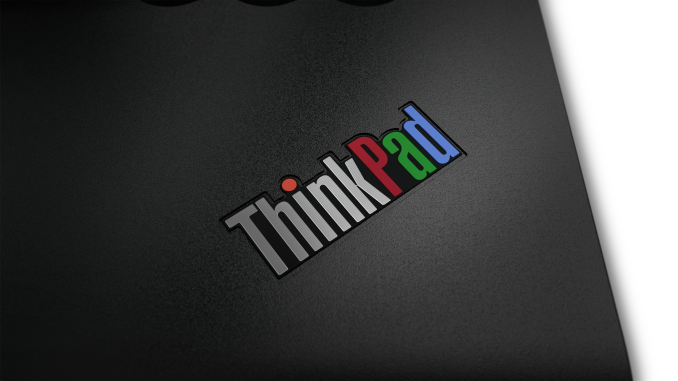
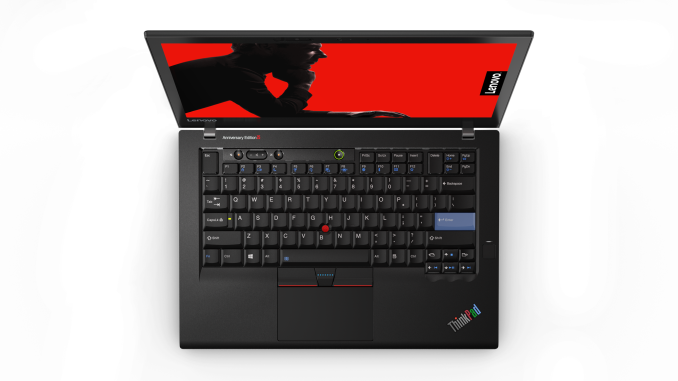
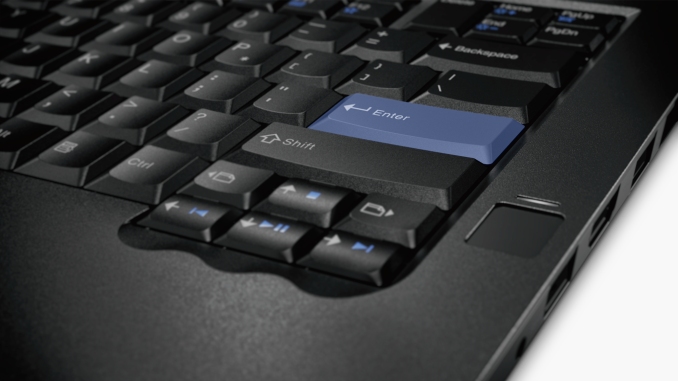
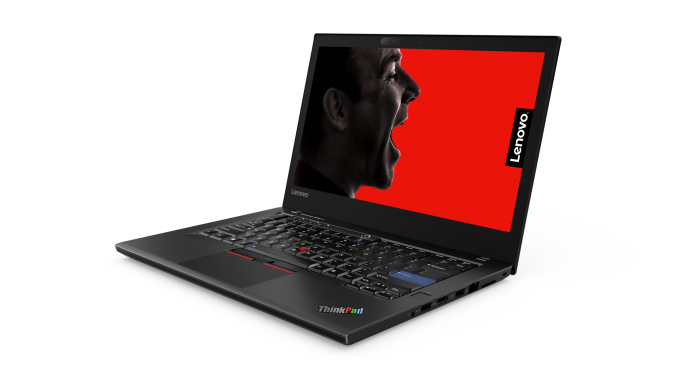
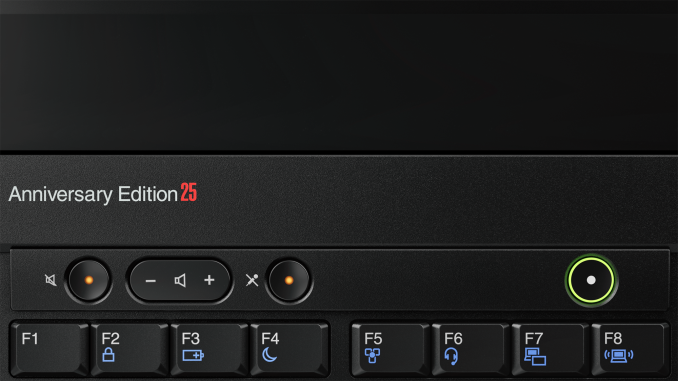
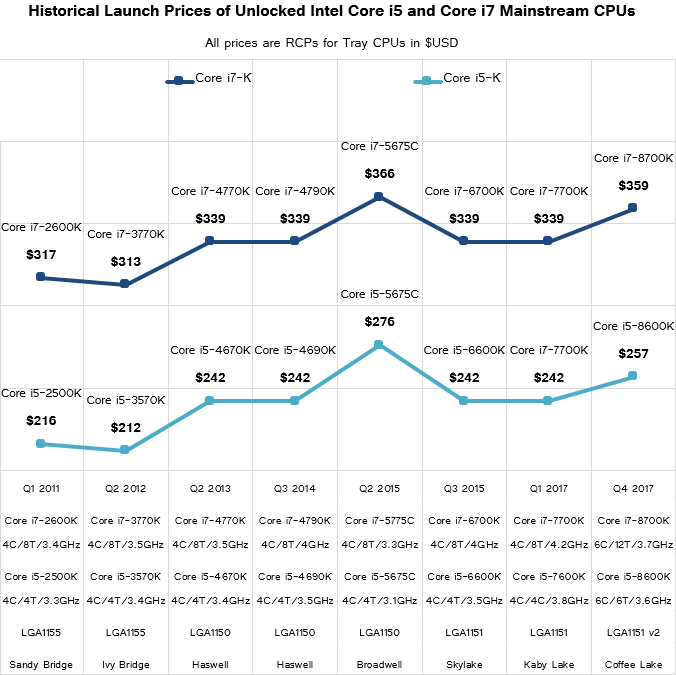
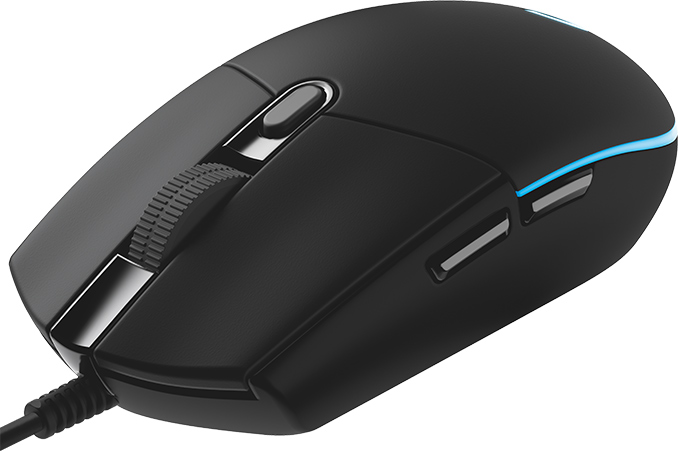



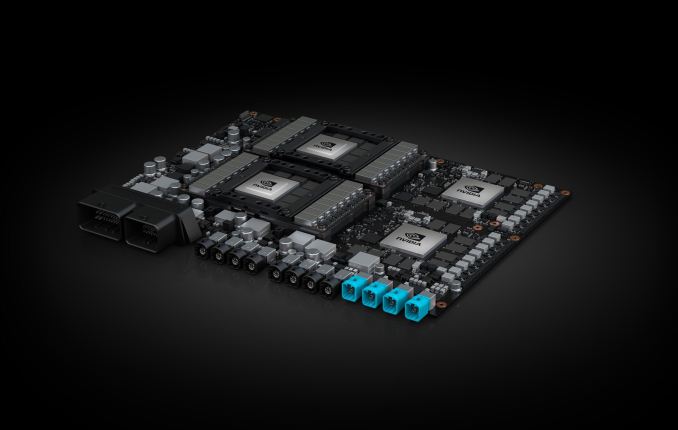
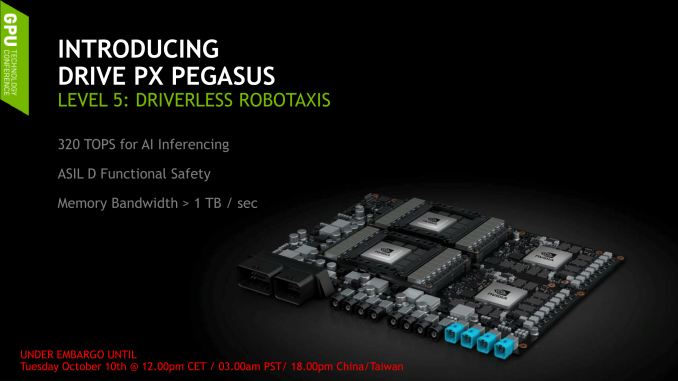
















Bookmarks